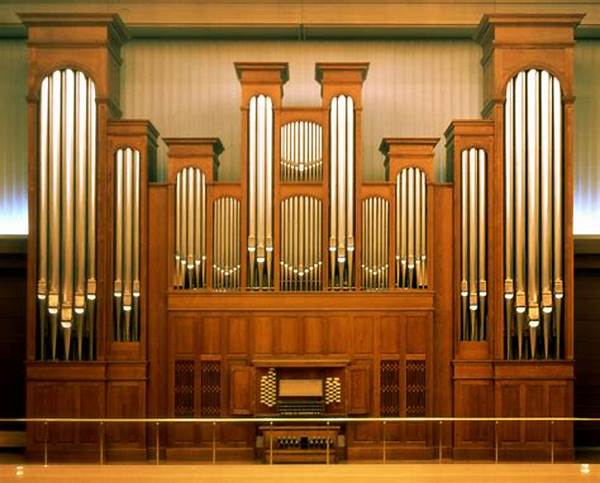Introduction to the Organ Musical Instrument
Imagine stepping into a cathedral, the sun casting colorful patterns through stained glass windows, and as you take a deep breath, the majestic sound of an organ fills the air, enveloping the sacred space in a symphony of wonder. The organ, a musical marvel, is not just an instrument but a guardian of sacred spaces, turning them into sanctuaries of sonic delight. This blog explores how the organ musical instrument is transforming sacred spaces into sonic wonders, a journey from ancient rituals to contemporary performances.
Read More : Tips For Choosing A Drum Head For A Quality Snare Instrument
From medieval chapels in Europe to modern concert halls, organs have been integral in creating aural masterpieces that captivate the soul. Their massive pipes, intricate keyboards, and foot pedals come together in a harmonious dance, conducted by gifted organists who are part artist, part engineer, and part magician. The allure of the organ lies not only in its grandeur but in its versatility—capable of producing a whisper as soft as a prayer or a booming declaration that shakes the rafters.
The Evolution of the Organ in Sacred Spaces
The journey of the organ into sacred spaces is one of innovation, creativity, and spirituality. Since its inception in Ancient Greece, where it was used to entertain the masses, the organ has evolved considerably. By the Middle Ages, it found its holy calling in churches across Europe. The monumental sound of the organ was seen as a divine gift, a direct communication with the heavens.
The Organ’s Role in Religious Ceremonies
The organ’s debut in sacred ceremonies wasn’t by chance; it was a decision steeped in theology. The instrument’s ability to evoke the ethereal was unmatched, making it a staple in services ranging from weddings to funerals. Each note played is steeped in tradition, where music serves as a bridge between the earthly and the divine. Organ music underscores the solemnity or joy of an occasion, transforming the setting into a space filled with divine grace.
Modern-Day Marvels: Organ Concerts
Today, many churches and cathedrals offer organ concerts, demonstrating its versatility beyond religious rituals. These performances attract music enthusiasts who appreciate the organ’s complex acoustics. In these concerts, the organ takes center stage, an orchestral powerhouse that fills the space with its multilayered sound. It’s a spectacle that leaves audiences in awe, proving once again how the organ transforms sacred spaces into sonic wonders.
The Mechanics of Organ Music
Behind the impressive façade of an organ lies a labyrinth of pipes, bellows, and keys. The organ is a technological marvel; each part contributes to its powerful sound. Organ builders are an elite group of artisans, devoting their lives to perfecting an instrument that can outlast generations. They understand how the organ’s sound enhances the architecture of sacred spaces, creating a synergy that elevates both music and mood.
The Anatomy of an Organ
1. Pipes – The heart of the organ, varying in size and material to produce different sounds.
2. Bellows – These control the airflow that creates sound, essential for the organ’s dynamic range.
3. Keyboards (Manuals) – Multiple keyboards allow for versatility in playing.
4. Pedals – Played with the feet, adding a layer of depth and complexity to performances.
Read More : Reviews Of Competitively Priced, Premium Quality Stringed Instruments
5. Stops – These control which sets of pipes are engaged, allowing for myriad tonal possibilities.
Organ Music: The Science and the Soul
Scientific studies have shown that organ music can evoke specific emotions; the vibrations can create calming effects, encouraging both reflection and joy. The organ’s sound waves interact with the physical structures they inhabit, creating an immersive experience that is both aural and tactile.
The Impact of Organ Music on Audiences
The power of the organ extends beyond ritualistic traditions or musical concerts—it’s an emotional journey that resonates deeply with audiences. For many, experiencing organ music is a transformative experience, leaving them moved long after the last note fades away.
Emotional and Spiritual Connection
The organ has a unique ability to touch the soul, evoking feelings of reverence, nostalgia, and awe. Its music has the power to lift spirits and offer solace, forming a spiritual connection between the listener and the divine. Testimonials from organ enthusiasts frequently recount personal transformations, moments of clarity, and spiritual renewal experienced within sacred spaces.
Expanding Audiences
Though organs are often associated with religious settings, they’re gaining popularity in secular spaces as well. Concerts frequently introduce the instrument to younger audiences, showcasing its capabilities beyond traditional settings. This expanding audience ensures that the legacy of the organ continues to thrive, reaching new generations and preserving its place as a sonic wonder.
Conclusion: The Lasting Legacy of the Organ
In conclusion, the organ is much more than a musical instrument; it’s a transformative force, unique in its ability to convert sacred spaces into arenas of sonic wonder. Each performance is a testament to its grandeur and the timeless nature of music itself. Through the hands (and feet) of skilled organists, audiences are invited to embark on an auditory adventure, exploring the depths of emotion and the heights of spiritual enlightenment.
Whether you’re a music aficionado, a curious traveler, or a spiritual seeker, the organ offers an experience that is profound, moving, and sensational. Its sound is a unifying force, cutting across cultural and religious lines to offer sanctuary to all who listen. As we continue to embrace this instrument, the organ will undoubtedly flourish, eternally holding its spot as both a cultural treasure and a marvel of musical innovation.
